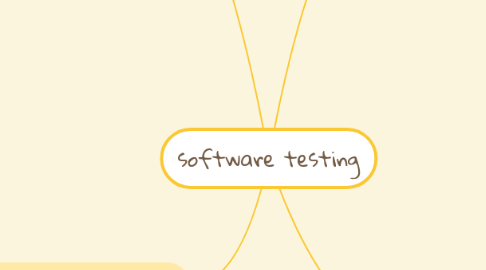
1. (chap 3) Static Testing
1.1. Test Design Techniques
1.1.1. Static
1.1.1.1. static analysis
1.1.1.1.1. Standard compliance
1.1.1.1.2. Code Metrics
1.1.1.1.3. Data Flow Analysis
1.1.2. Dynamic
1.2. Review
1.2.1. Review Process
1.2.1.1. planning
1.2.1.2. Initial Review
1.2.1.3. Individual Review
1.2.1.4. Issue Communication and Analysis
1.2.1.5. Fixing and Reporting
1.2.2. Review Types
1.2.2.1. Informal review
1.2.2.2. Walkthroughs
1.2.2.3. Technical reviews
1.2.2.4. Formal reviews
1.2.2.4.1. Roles and Responsibilities
2. (chap 4) Test Techniques
2.1. Structured Based – White Box Techniques
2.1.1. Statement Coverage
2.1.2. Decision/Branch Coverage
2.1.3. Condition Coverage
2.2. Experienced Based Techniques
2.2.1. Error Guessing
2.2.2. Exploratory Testing
2.3. Specification Based Techniques
2.3.1. Equivalence Partitioning
2.3.2. Boundary Value Analysis
2.3.3. Decision Tables
2.3.4. Use Case Testing
2.3.5. State Transition Testing
3. (chap 1) Fundamentals of Software testing
3.1. What is testing?
3.2. Quality vs testing
3.3. General testing terms
3.4. Testing vocabs
3.5. Reasons of project failure
3.6. Testing objectives
3.7. Testing principles
3.8. Testing process
3.8.1. Test Planning
3.8.2. Test Monitoring and Control
3.8.3. Test Analysis
3.8.4. Test Design
3.8.5. Test Implementation
3.8.6. Test Execution
3.8.7. Test Completion
4. (chap 2) Testing throughout SDLC
4.1. Test Levels
4.1.1. Unit testing
4.1.2. integration testing
4.1.3. system testing
4.1.4. user acceptance testing
4.2. Test Type
4.3. Test Approaches
4.3.1. Proactive and Reactive
4.3.2. Manual and Automated
4.3.3. Black-box, White-box and Grey-box
4.3.4. Scripted and Unscripted
4.3.5. Static and Dynamic

